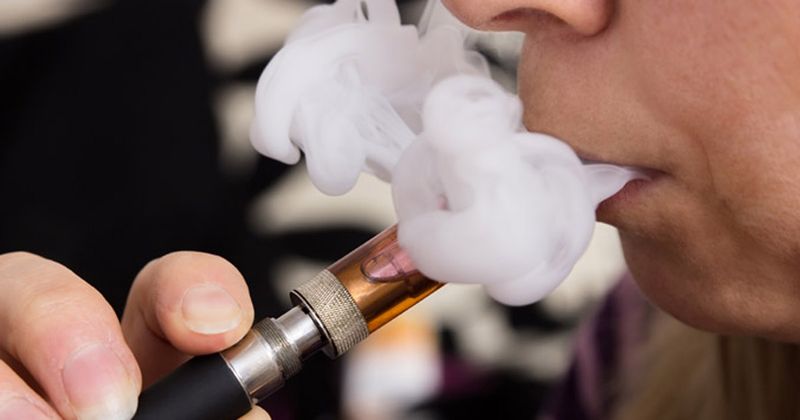High levels of synthetic cooling agents in e-cigarettes may exceed safety thresholds
SAN FRANCISCO — In a new study, researchers detected the presence of synthetic cooling agents in U.S.-marketed e-cigarettes, at levels that may exceed current safety thresholds.
In late April, the FDA proposed new rules prohibiting menthol cigarettes and flavored cigars.

“We were concerned that menthol and synthetic compounds or artificial compounds that are similar to menthol are also in e-cigarettes,” Sven-Eric Jordt, PhD, associate professor in anesthesiology and associate professor of pharmacology and cancer biology at Duke University School of Medicine, told Healio during the American Thoracic Society International Conference. “These compounds have the same cooling effect as menthol. We wanted to see what the levels are, how much is added to the e-cigarettes and whether there might be some concerns about toxicity in these compounds. They are permitted for use in foods, but we don’t know their safety when you inhale them in tobacco products. Some international regulatory organizations have issued threshold values for raising toxicity concerns.”
According to Jordt, e-cigarette manufacturers use these compounds to create a cooling effect to reduce unpleasant sensations and allow users to inhale more nicotine.
Jordt and colleagues searched e-liquid vendor sites for the terms “koolada,” “kool/cool,” “ice” and researched whether the companies sold products with the specific synthetic cooling agents WS-3 and WS-23. Researchers compared ice flavor varieties of the currently most popular disposable e-cigarette brand, Puff Bar, and non-ice varieties.
Using gas chromatography-mass spectrometry, Jordt and colleagues characterized e-liquids and synthetic cooling agents and calculated the margin of exposure to determine risks associated with exposure to synthetic cooling agents from using e-cigarettes. A margin of exposure of 100 means that the user’s exposure is 100 times lower than levels proven to cause toxic effects in the organs of animals. Scientists studying potentially harmful substances are aware that a margin of exposure below 100 indicates increased risk, according to a press release.
The synthetic cooling agent WS-3 was identified in 24 of 25 e-liquid refills. In addition, 13 of 14 Puff Bar disposable e-liquid flavor varieties contained the synthetic cooling agent WS-23 and five also contained WS-3 in ice and non-ice flavors.
Researchers observed a margin of exposure below the safe margin of 100 or more for most daily vaping levels in modeling WS-3 consumption from vaped e-liquids with 3 mL in 14 e-liquids, 5 mL in 18 and 10 mL in 20. In 11 of 13 Puff Bar products, the margin of exposures for WS-23 were less than 100 in all e-cigarette use scenarios.
“This should raise concerns for regulators, such as the FDA, to look into this and issue limitations on how much of these components should be added into these products,” Jordt said. “This is still a market with very little oversight by government regulators and many of the chemicals in there are of concern, may be toxic and the levels are higher than would be allowed in food.”
These synthetic cooling agents were found in mint, menthol, fruit and candy-flavored e-cigarette products.
“Our findings confirm that the cigarette industry is disregarding safety levels of the chemicals they add into their products to make them more addictive,” Jordt said. “They constantly evade regulation, and the FDA has a hard time to catch up and people should be cautious using these products and becoming addicted to them.”
For more information:
Sven-Eric Jordt, PhD, can be reached at sven.jordt@duke.edu.
References:
- Jordt SE, et al. Am J Respir Crit Care Med. 2022;doi:10.1164/ajrccm-conference.2022.205.1.
- Potentially dangerous synthetic cooling agents are used at high levels in e-cigarettes and refillable vaping liquids. Published May 15, 2022. Accessed May 15, 2022.

